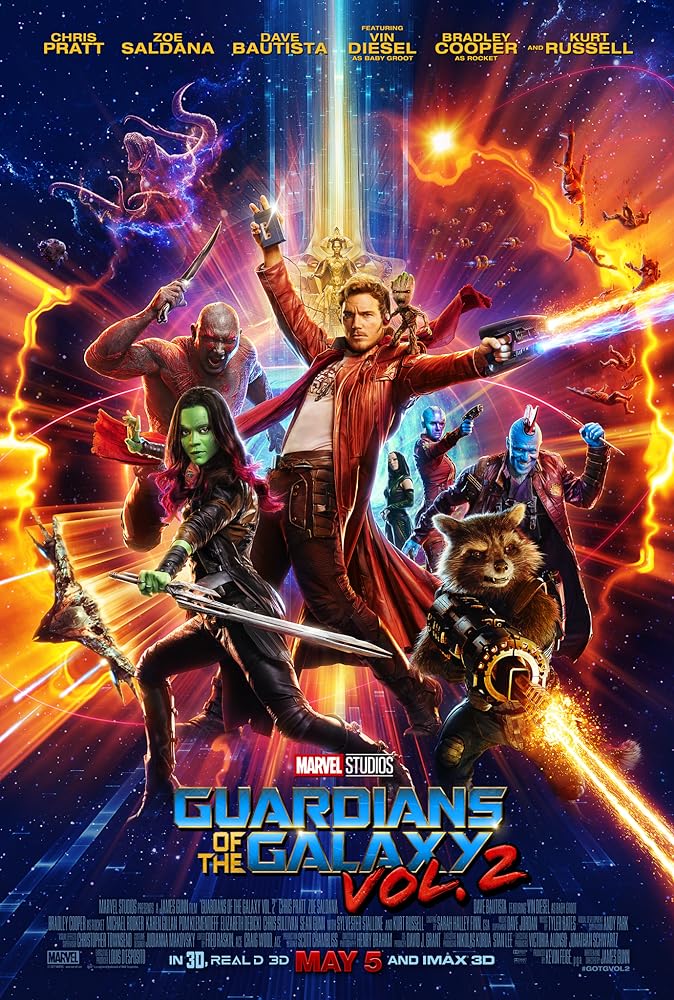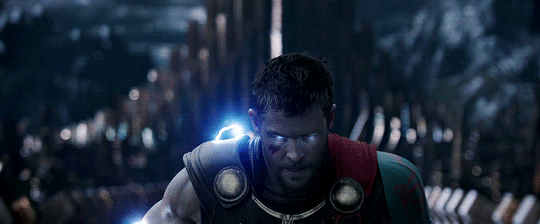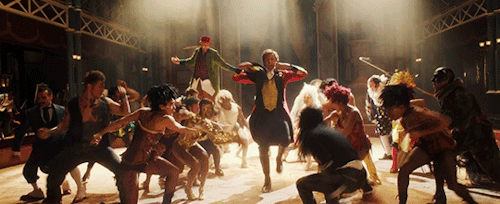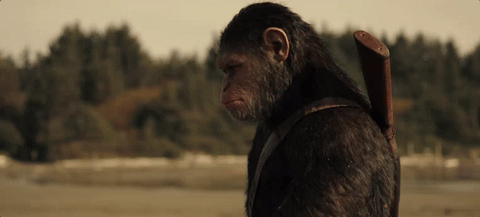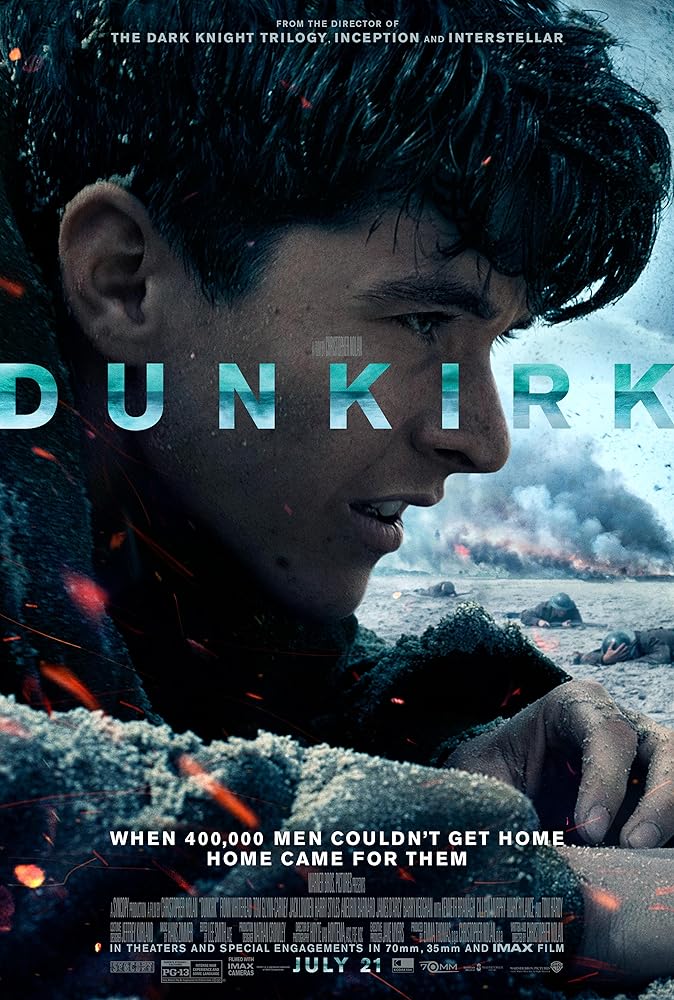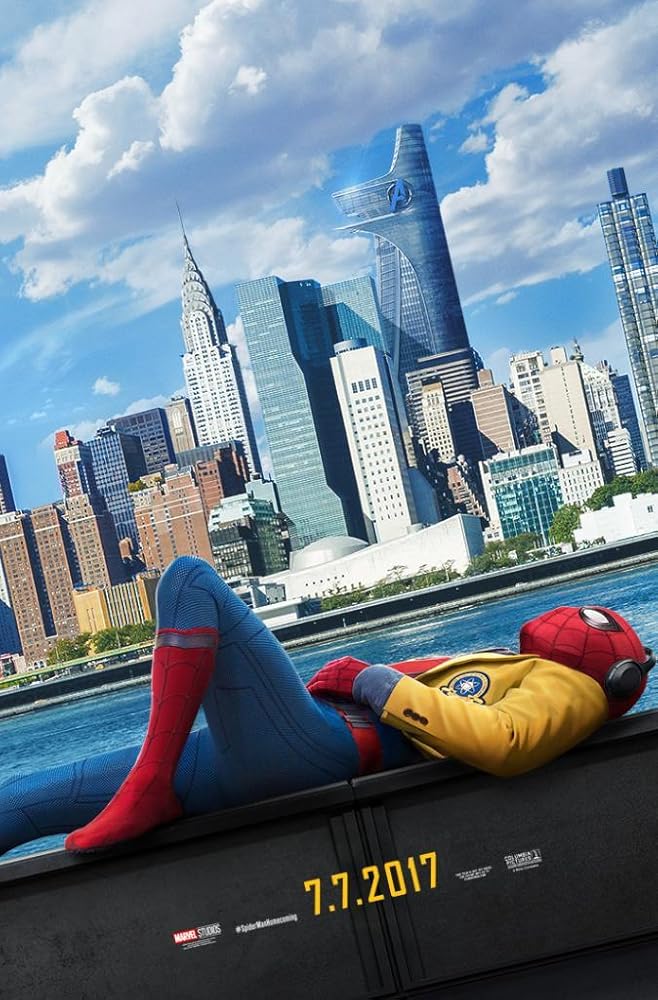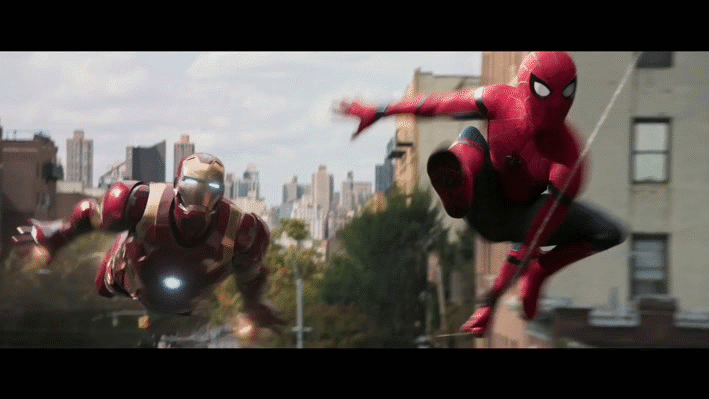Welcome back to Rhode Island Movie Corner’s annual end-of-the-year list in which I count down my picks for my Top 12 Favorite Films of 2017. And today, folks, we’ve come to the grand finale of this epic 4-part endeavor; today, I’m listing my Top 3 Favorite Films from this past year in film. If you missed the last three parts of this list, click the following links below to check out my last 9 picks and my 6 Honorable Mentions. With that said, let’s not waste any more time and close out this list…
For some people, my #3 pick is an obvious choice. For others, though, that’s not exactly the case. Yes, folks, I’m referring to the film that has surprisingly proven to be one of the most polarizing releases in recent memory. And the reason why I say ‘surprisingly’ is simple just because of what franchise it comes from.

Who would’ve thought that a Star Wars film, of all things, would end up being one of the most divisive films of the past few years? And yet, that has been exactly the case with director Rian Johnson’s entry in the legendary franchise and the follow-up to 2015’s smash hit Star Wars: The Force Awakens. While critics have been almost universally positive about the film, audiences have been split down the middle by comparison. To put this all into perspective, while the film’s current score on Rotten Tomatoes is 90%, the site’s audience score is 49%, a rating that is lower than any of the audience scores for the infamous prequels… that is saying something. And if you were to ask me the main reason why this film has been so divisive amongst Star Wars fans, I honestly couldn’t narrow it down to just one thing because there have been several aspects of the film that have proven to be a source of contention amongst fans. This includes everything from certain characters’ roles in the plot to specific moments in the film itself. Ultimately, though, this just confirms the one thing that I’ve been saying for these past few years now; Star Wars fans are some of the hardest to please in the entire film fan community. It’s been quite a ride for the Star Wars fandom, which started out strong thanks to the universally revered original trilogy but then began to stumble once series creator George Lucas began to make a bunch of controversial changes to it. Of course, this was then followed by the near-universally maligned prequel trilogy which many fans are still getting worked up over even though it’s been more than a whole decade since its conclusion. And while the Disney-era Star Wars films have done quite well with critics and audiences, they’ve also had their fair share of dissenters for their own unique reasons.
As we all know, in the case of The Force Awakens, there’s been the nagging nitpick made by those who argue that the film was nothing more than a retread of Episode IV: A New Hope. And yet, ironically, one of the main complaints that several people have had with The Last Jedi… was that it was way too different. Depending on who you ask, though, the fact that the film was such a radically different take on Star Wars was why they felt that it was ultimately the best thing to happen to the franchise in a long time. And while I’ll admit that I initially didn’t quite get what everyone was talking about when they said that The Last Jedi was a ‘fresh, new’ take on Star Wars, in retrospect I do recognize the main thing that it does to be different from the franchise’s previous installments. The most notable thing about The Last Jedi is that it completely debunks the entire lore of the Star Wars franchise through its main theme of learning from one’s mistakes. As witnessed in the film’s first trailer, Luke Skywalker often talks about how he believes that the time has come for the Jedi Order to end. And as the film goes on, he continually points out some of the Order’s biggest downfalls, namely the fact that it placed its entire faith on Luke’s father Anakin to be their ‘chosen one’ and bring balance to the Force. Ultimately, though, both the Order and its faith were completely undone when Anakin was corrupted by the dark side and became Darth Vader as was witnessed in the prequels. In other words, the main theme of this film is best summed up by its biggest surprise cameo, Master Yoda (and yes, Yoda (voiced again by Frank Oz) was created via puppetry this time around; a very neat development following his CG design in the prequels). In his one scene with Luke, he explains to his former protégé that, at the end of the day, failure is often one’s greatest teacher.
And the cool thing about all this is that the idea of ‘learning from past mistakes’ ends up being an effective means of character development for each member of the new trilogy’s trio of leads. Right from the start, we see Poe Dameron having to understand that his reckless behavior (or, as Leia puts it, ‘getting into an X-Wing and blowing something up”) always runs the risk of getting him and his fellow pilots killed. This allows Poe to become a much stronger leader by the film’s end, something that will surely carry over into Episode IX. Meanwhile, Finn, after reawakening from the coma that he ended up in at the end of The Force Awakens, embarks on a secret mission with mechanic Rose Tico to try and stop the First Order from destroying the Resistance. Said plan involves the two of them traveling to the casino city of Canto Bight to find a codebreaker who can disable the First Order’s tracking devices. And while they do manage to find one in the enigmatic DJ (Benicio Del Toro), their new ally ends up betraying them to the First Order to save his own skin. In other words, their headstrong nature ultimately ended up getting the best of them. On a side note, Rose proves to be an endearing new addition to the franchise’s ever-growing cast of characters thanks in large part to Kelly Marie Tran’s terrific performance in the role. And no, Star Wars fans, she is not the franchise’s worst character since Jar Jar Binks and does not deserve all the racist attacks that she’s been getting recently. Finally, we have Rey, who finds herself becoming more connected to Ben Solo AKA Kylo Ren through the power of the Force. When Kylo tells her about the incident where he ended up turning against his uncle, in which Luke was this close to killing his own nephew when he realized that he had become corrupted by Supreme Leader Snoke, she embarks off on her own accord to try and help him find redemption. But even after Kylo ends up turning against Snoke and killing him, along with the two of them teaming up to take down Snoke’s guards, Rey discovers that Kylo is still unable to leave his new power-hungry mentalities behind as he assumes control of the First Order.
As for the rest of the film, it features everything that you’d expect out of a great Star Wars film. It boasts some of the franchise’s best visuals and cinematography which, as expected, results in some fantastic action sequences (e.g. the final battle on the planet Crait where the Resistance mounts one last defense against the First Order’s AT-AT battalion in outdated speeders). And while I’ve found that some were rather iffy on Johnson’s screenplay being a lot more comedic-based in terms of its dialogue, I personally didn’t mind the humor in this film. This includes everything from Luke casually tossing his old lightsaber away when Rey first gives it to him to the scene where Poe trolls General Hux via comms during the opening battle (“Hi, I’m holding for General Hugs…”). And, of course, the cast is phenomenal from top to bottom; this includes everyone from the lead trio of Daisy Ridley, John Boyega, and Oscar Isaac to newcomers like Laura Dern as Vice Admiral Holdo, who becomes the Resistance’s new leader after Leia ends up incapacitated by a First Order attack. While the bulk of the film revolves around Holdo and Poe getting into a conflict based on their differing strategic methods, namely due to her passive strategy of a discreet evacuation, she ends up going out on an epic note when she rams the First Order’s fleet while at light-speed to allow the Resistance enough time to escape. And, of course, we cannot forget about the franchise’s original protagonist, Luke Skywalker. After only having a non-speaking cameo at the end of The Force Awakens, Luke (and therefore Mark Hamill) gets a far more substantial role in this film. And while it does end with the legendary Jedi being killed off, at the very least he goes out on the most badass of notes during the final battle on Crait where, after spending the entire film telling Rey that he isn’t going to come back to help the Resistance, he arrives on the battlefield to take on the First Order all by himself.
When Kylo orders his forces to fire upon Luke, we see that Luke somehow manages to survive this complete with the most badass moment in the film where he brushes dirt off his shoulder as if to say that the last attack on him was nothing. And after a lightsaber fight between Luke and Kylo, we learn that the former has been Force projecting himself from his current location on the planet of Ahch-To. This was hinted at before when it was apparent that Luke’s footprints weren’t appearing on the planet’s salt-based surface; that and there’s also the fact that Luke looks a lot younger compared to what we’ve seen from the rest of the film. Anyway, after telling Kylo that “he will not be the Last Jedi”, a moment that is intercut with Rey using the Force to rescue the Resistance, Luke’s projection disappears (“See you around, kid!”). Back on Ahch-To, Luke witnesses a double sunset (a perfect callback to the iconic scene in A New Hope where he witnessed a similar sunset on his home planet of Tatooine) before fading away a la Yoda in Return of the Jedi. And as for the backlash surrounding Luke being able to do all that… well, Rian Johnson recently proved these critics wrong by showcasing a Star Wars book from a few years back that proves that it’s possible so… yeah, no further comment. Speaking of final hurrahs, as we all know, this film served as the final appearance of Carrie Fisher as Leia following her death back in 2016. Suffice it to say, she also concludes her run on an excellent note. The scene where she finally reunites with her brother Luke is easily one of the best emotional moments in the entire film, and not just because of the real-world context surrounding it. And as for the scene where she manages to survive being blown out into space, another point of contention amongst fans… well, it has been established that even though she isn’t a Jedi like Luke, she is tied to the Force just as much as he is. So… yeah, no further comment.
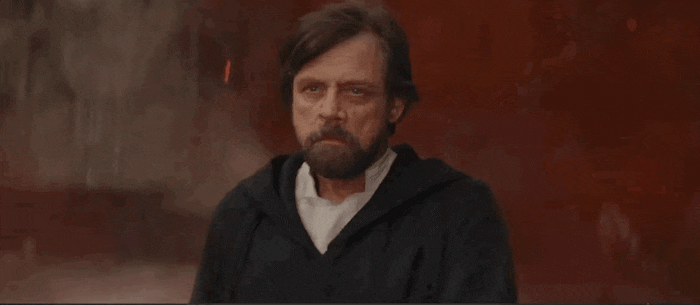

In conclusion, I want to make it clear that, at the very least, I do understand why some folks weren’t too big on The Last Jedi; film is a subjective medium, after all. However, I also encourage this film’s biggest critics to try and give it another chance so that they can hopefully appreciate all the interesting things that it does for the franchise. Specifically, Rian Johnson deserves a lot of credit for taking so many huge risks by deconstructing Star Wars’ expansive mythology and going against fans’ expectations. Regarding the latter, this includes everything from the unceremonious death of the trilogy’s supposed big bad Snoke to the scene where Kylo tells Rey that her parents were ‘nobodies’ who gave up their daughter for chump change. And as the film concludes with a young child labor worker back at Canto Bight being shown to be one with the Force, along with the reveal that Rey had taken the Jedi Order’s ancient texts onto the Millennium Falcon before Luke could destroy them, we’re left on an uplifting note for the franchise’s future. Of course, we’ll soon be seeing the conclusion of this current story when J.J. Abrams returns to ‘finish what he started’ with Episode IX in 2019. But one thing’s for certain, though… while The Force Awakens managed to avoid being undone by all the hype and expectations that surrounded it prior to its release, it’s clear that this turn of events was ultimately reserved for The Last Jedi as evident from all the various fan reactions to it. And to be perfectly frank, the Star Wars fan-base’s handling of this whole debacle hasn’t been very smooth… and that’s putting it lightly…
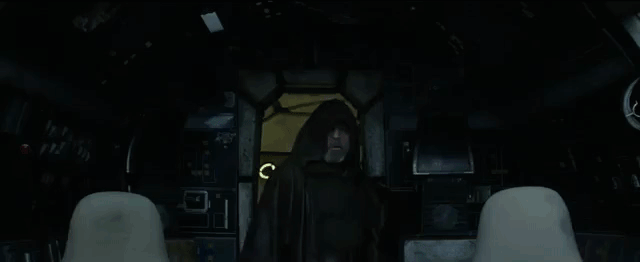

Well, we have another arguably polarizing release at the #2 spot. In this instance, it’s because the film in question is a remake of one of the most famous animated films of all-time. But even with the hefty expectations that were put upon it for that very reason, I ultimately enjoyed this charming new rendition of everyone’s favorite ‘tale as old as time’.
Now I’ll admit that my highly positive feelings towards this film may have been somewhat influenced by the fact that I first saw it in one of those ‘perfect moments’. I first saw this film on my birthday while on vacation in Washington D.C. at its special Fan Event. Along with getting to see the film in IMAX, this event featured a few behind-the-scenes videos and the music video for John Legend and Ariana Grande’s rendition of Beauty and the Beast which, contrary to apparently popular opinion, I thought was a pretty good take on the classic song. With all this said, though, I do recognize why this was arguably the one entry in Disney’s continuing line of live-action remakes that attracted the most skepticism prior to its release. After all, we’re talking about Beauty and the Beast, one of the most beloved entries in Disney’s ever-expanding collection of animated classics. It is, after all, the first animated film that ever got nominated for Best Picture. And while the same outcome didn’t occur for this new take on it, I still felt that it was a pleasant new rendition of a classic story. Now, granted, unlike some other Disney remakes (e.g. The Jungle Book, which was a combination of Disney’s animated classic and Rudyard Kipling’s original novel), this new take on Beauty and the Beast follows the same general plot as its animated counterpart. Belle, a fair, young maiden from a quiet town in France, takes her father’s place as the prisoner of a ferocious beast who resides in a hidden castle. Belle soon learns that the Beast was once a prince who was cursed along with his subjects by an enchantress when he refused her request for shelter. Eventually, though, Belle and the Beast end up falling in love as she tries to help him and his servants break the curse before it becomes permanent, which all coincides with the villagers’ attempt to kill the Beast as led by the boorish hunter Gaston.
Still, I do think that the film does ‘just enough’ to be its own thing when compared to the original. This is thanks to various plot alterations and additions that never betray the heart of its classic story. Probably my favorite new addition comes in the form of backstory that explains why Belle and her father Maurice have remained in their ‘poor, provincial town’ indefinitely. When Belle gets the chance to return to ‘the Paris of her childhood’ thanks to a magical book that was given to the Beast by the Enchantress that allows them to travel wherever they want, she learns that her father had the two of them evacuated when the city began to be ravaged by the plague, with her mother being one of its unfortunate victims. This, along with Kevin Kline’s more subdued portrayal of ‘crazy, old Maurice’ compared to the original film (which I may, in fact, prefer…), gives the remake one of its best bits of emotional poignancy. I also appreciated the decision to have Belle be just as invention-savvy as her father. Early in the film, she comes up with a more efficient method of doing the laundry before it ends up getting dismantled by the townspeople. During her first night as the Beast’s captive, she uses the various bits of clothes that came from Madame de Garderobe the Wardrobe to try and escape out the window of her tower. And when Gaston has her and her father imprisoned before he and the townsfolk head out to storm the castle, she and Maurice manage to pick the lock and escape themselves. Changes like these are arguably quite simple, but in this instance, I’d say that they work because they don’t end up being so substantially different that they drastically alter this iconic plot.
As for Belle herself, I think it’s safe to say that when Emma Watson was first cast in the role, a lot of people were enthusiastic about this given her iconic turn as Hermione in the Harry Potter films. However, I noticed that this began to change drastically once the film came out, as Watson has gotten some flak for her singing performance. Ultimately, though, I felt that she was perfectly fine when it came to her singing, namely during the new songs that were created for the film (more on those in a bit…). And as far as the entire role is concerned, Watson does quite well with maintaining everything that fans of the original film loved about Belle as a character, including her independent spirit and her knack for being ahead of her time. She also has solid chemistry with Dan Stevens, who’s also quite excellent as the Beast and does a fine job of handling the character’s great redemption arc. The two of them are also backed by an equally terrific supporting cast. The Beast’s collection of servants boasts a stacked ensemble that features the likes of Ian McKellen as Cogsworth, Ewan McGregor as Lumiere, and Emma Thompson as Mrs. Potts, just to name a few. As for the film’s main villains, both Luke Evans and Josh Gad are delightfully hammy as Gaston and LeFou, respectively. And yeah… the time has come to once again address that whole controversy surrounding the moment where the latter dances with a male villager who had been put into a dress during the attack on the castle. As I’ve said before, the backlash that this got from LGBT critics was completely ridiculous as this is literally a ‘blink and you’ll miss it’ moment that arguably would’ve gone unnoticed had it not been reported by various news outlets beforehand. In fact, the moment where Madame de Garderobe puts the other guy into a dress, which he reacts to in a positive manner, was received with applause the first time I saw this in theaters… do with that as you will.
Visually speaking, the film looks amazing even when considering that a lot of it is CG-based (e.g. ‘Be Our Guest’, where behind-the-scenes videos show that everything that Emma Watson had to react to would be added in later). Speaking of music, this film’s renditions of the original film’s classic lineup of songs are quite excellent, though there are also some great new songs as well. There’s ‘Days in the Sun’, which is arguably the melancholic but ultimately hopeful counterpart to ‘Human Again’, a song from the animated film that ended up getting cut. There’s the heartfelt melody ‘How Does a Moment Last Forever’, which is sung twice in the film, once by Maurice and then later by Belle. It’s also sung by Celine Dion (who performed the pop version of the original film’s title song) during the end credits. But my personal favorite of the new songs is ‘Evermore’, which is the Beast’s big solo that he sings as Belle leaves to rescue her father. Stevens’ strong vocal performance, paired with the great imagery of seeing Belle’s bright yellow dress stand out in the darkness as she heads off into the night, combine to make this one of the standout sequences of the film. But if you ask me, there are plenty more great standout moments in this film that help to make it a worthwhile addition to Disney’s growing line of live-action remakes of their animated classics. I’ve gone over my thoughts on Disney’s current live-action film strategy several times in the past, specifically noting that I’m in no way bothered by all the remakes that have either been announced or are currently in development. Because regardless of how they end up faring with critics and audiences, the original animated films will still be there and will not be ruined by a ‘lousy’ re-imagining. And this mindset applies perfectly to the new Beauty and the Beast. Is it better than the original? No, but it doesn’t have to be.
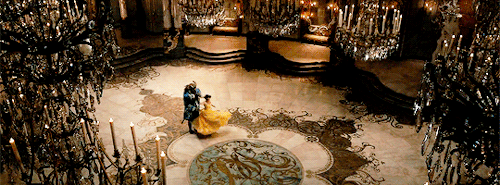

And finally, we’ve arrived at my #1 favorite film of 2017. Seeing how this list has been almost entirely dominated by blockbusters, I’d figured that it was time to highlight something from the independent market… nah, I’m just messing with you guys. Cue one of the most obvious #1 picks that I’ve ever made in 3, 2…
When I originally reviewed this film back in May, I decided to make a conscientious effort to avoid addressing the one argument that was being brought up by almost every major critic; that Guardians of the Galaxy Vol. 2 was not as ‘fresh’ as its predecessor. I’m serious, look at ANY major review for this film, even the positive ones, and nine times out of ten you’ll find that argument in it. And to be perfectly frank, this whole ‘not as fresh as the original’ argument is a recent fad that I’m getting rather sick of, as it’s also been thrown around to the unwarranted detriment of films like Kingsman: The Golden Circle and X-Men: Apocalypse. Yeah, I know that the current film market is heavily dominated by remakes, reboots, sequels, etc., but whatever happened to the simple but more effective argument of a film just not being ‘as good as the original’? To me, this whole ‘not as ‘fresh’ as the original’ argument comes off as being a bigger detriment to a film than it really needs to be because it mainly stems from one’s demand for original content taking greater precedence over the matter of giving the film a fair chance to prove itself. Anyway, I’ll admit that upon first viewing, I was legitimately on the fence about which Guardians films was better. But this changed when I participated in a podcast with my friends Matthew Goudreau and Alex McDevitt in which we ranked all the films in the Marvel Cinematic Universe prior to the release of Spider-Man: Homecoming. During this podcast, I realized one important thing; that this film had been getting the same treatment as films like Iron Man 3 and Avengers: Age of Ultron. And that is why I’ll be saying the following statement here and now… Guardians of the Galaxy Vol. 2 IS a superior sequel to Marvel Studios’ equally fantastic 2014 outing, Guardians of the Galaxy.
Now, to be clear, I still very much adore the original Guardians of the Galaxy for its vibrant visuals, great humor, and an endearing cast of main protagonists tied to a plot that was steeped in emotional poignancy. But with Vol. 2, writer/director James Gunn manages to craft a plot that boasts an even stronger emotional core. This is thanks to the film’s main theme of fatherhood which primarily stems from the plotline of Peter Quill AKA Star-Lord finally meeting his long-lost father, the celestial being known as Ego. The film also does a great job when it comes to further developing the Guardians, which is namely due to the decision to have them be split off into teams of two. And while I know that some may view this as a bad thing because it keeps them all separated for most of the film, it ultimately works for two reasons. For one thing, it’s a crucial element of the plot as the Guardians find their familial bonds being put to the test. But the other key thing about all this is that each of these pairings ends up being quite well-balanced in terms of who spends time with who. It all starts, of course, with Peter spending a lot of time with Ego. While this does allow Peter the opportunity to finally connect with his real father (or, as Gamora puts it, his ‘Zardu Hasselfrau’, which is her mistaken name for Peter’s childhood icon David Hasselhoff (and yes, ‘the Hoff’ makes a cameo in this film when Ego briefly takes his form)), it also keeps him separated from the rest of his friends.
Another key pairing is the duo of sisters/rivals Gamora and Nebula. After being generally underused in the first film, Nebula is thankfully given a larger role in the sequel as it delves further into the complicated relationship between her and Gamora. As the adoptive daughters of the Mad Titan Thanos, both were pushed to their limits with Gamora often coming out on top over Nebula, who was forced to be subjected to torturous cybernetic enhancements by their father as punishment for her failures. This ultimately explains why they’ve been at odds with each other for such a long time. Because of Gamora’s concern for survival when it came to dealing with Thanos’ wrath, she never realized how this often ended up affecting Nebula, who always ended up being the primary victim of said wrath. This is also key to Nebula’s main drive in the film (which, obviously, had already been established in the first film when she stood by Ronan after he boldly defied Thanos) to kill their father. Because of all this, while the film is still mainly about fatherhood, it’s also firmly tied to the idea of sisterhood as well, all culminating in the scene where Nebula leaves to hunt Thanos but not before sharing a heartfelt goodbye with Gamora, who assures her that she will always be her sister. Next, there’s everyone’s favorite ‘walking thesaurus’, Drax, who mainly spends time with Mantis, Ego’s assistant (or, as Drax puts it, his ‘pet’). This pairing is perfect as it’s well-established that they’re both rather lacking in terms of social skills; Mantis herself openly admits this given how she’s spent almost her entire life with Ego on his planet. Despite this, however, the two of them end up becoming kindred spirits as Mantis’ ability to feel whatever another person is feeling by touching them allows her to experience the sorrow that Drax felt when his wife and daughter were killed by Ronan.
The final ‘major pairing’ of the film comes in the form of Rocket (and, therefore, Baby Groot) and Yondu, who end up involved in their own little subplot where they deal with a bunch of mutinous Ravagers. Much of Guardians 2’s plot stems from Rocket stealing a bunch of batteries from the alien race known as the Sovereign. Not only does this result in a fallout between them and the Guardians, but it also begins to cause significant tension within the Guardians’ group themselves, especially between Rocket and Quill. But this all leads to a crucial scene where Yondu confronts Rocket over his volatile attitude. It is here where Yondu remarks that the only reason why Rocket often pushes people away is that he’s unable to express how much he truly cares about them due to his overall insecurity. In short, Yondu points out that they are a lot more similar than they think, which serves as an excellent way of further developing them both as they work to overcome this shared weakness of theirs (I’ll get into how this affects Yondu later…). But what about Baby Groot? Well, you might be surprised to find that the younger self of Rocket’s best friend doesn’t really factor into the film as much as some may have expected. Still, he does manage to have quite a few of his own standout moments, including the opening credits sequence (done in the style of one long take) where we see him dance around while the Guardians deal with a giant alien monster. There’s also the scene where Yondu and Rocket try to get him to find a new prototype fin for Yondu (which is the technology that allows him to control his famous whistle-controlled arrow) only for him to keep bringing back the wrong items, including but not limited to Yondu’s underwear, “That Guy’s Eye!”, and even a severed toe.
MCU films have always been known for their excellent visual effects, and Guardians 2 is no exception to this. The first Guardians was already one of the franchise’s best-looking installments due in large part to its vibrant color palette that helped to bring the cosmic side of the Marvel Cinematic Universe to life. And yet, this film somehow manages to top the beautiful visuals of its predecessor, effectively putting it on par with Doctor Strange as one of the most visually stunning MCU films to date. And, of course, like the first Guardians, this film also boasts another great soundtrack courtesy of ‘Awesome Mix Vol. 2’. In fact, just like how I’ve argued that this film was superior to its predecessor, I’d argue that the second ‘Awesome Mix’ is better than the first. Again, no disrespect to ‘Awesome Mix Vol. 1’, which featured the likes of ‘Hooked on a Feeling’, ‘O-o-h Child’, and ‘Ain’t No Mountain High Enough’, all of which were tied perfectly to the film’s overall narrative. However, I do think that ‘Awesome Mix Vol. 2’, which features the likes of ‘Surrender’, ‘Mr. Blue Sky’, and ‘My Sweet Lord’, has a slight edge to it when it comes to the songs’ connection to the plot. One prime example of this is Fleetwood Mac’s ‘The Chain’, which is used twice in the film. It’s first used during the scene where Peter, Gamora, and Drax head off with Ego to his planet while leaving Rocket and Groot behind to fix their ship, a nod to the growing divide between the group. But then, as the Guardians reunite at the end and Peter remembers who his real family is in a beautiful, non-dialogue montage sequence in which he remembers a bunch of happy moments that he’s had with each of his friends, the song roars back with a vengeance. Then, of course, there are other song-to-scene highlights, like the hilariously dark juxtaposition of a light-hearted song like Jay and the Americans’ ‘Come a Little Bit Closer’ set to the scene where Yondu, Rocket, and Groot kill all the mutinous Ravagers.
On that note, let’s talk about this film’s villains, as there are three main groups that fall into this category. First, there’s the Sovereign, led by their ruler Ayesha (Elizabeth Debicki). However, despite what the marketing campaign may have suggested, they ultimately aren’t the main antagonists of the film. Instead, they’re more of a constant thorn in the Guardians’ side after Rocket steals their batteries. Still, they do have their moments, namely via the scenes that show off their arcade-style facility where they remotely pilot their attack ships; it’s basically that one scene in the first Avengers where Tony Stark calls out a S.H.I.E.L.D. agent for playing Galaga while on the job fully realized. Plus, it also seems like the Sovereign are set to play a larger role in the next Guardians film as apparent from one of this film’s five (yes, five!) post-credits scenes in which Ayesha shows off her new creation, Adam Warlock. Next, there’s the mutinous group of Ravagers led by Taserface (Chris Sullivan)… and yes, that’s his name. Obviously, the film takes much pleasure in making fun of this character and his silly name; James Gunn did once refer to him as the ‘dumbest character of all-time’ back when he was first hired for Guardians of the Galaxy. And while the mutinous Ravagers ultimately play a minor role in the overall plot, just like the Sovereign, they also contribute to some of the film’s best moments. So, who is the main villain of the film, you ask? That would be Ego himself, as the group soon learns of his sinister plan to terraform other planets so that they can become further extensions of himself via a set of seedlings that he’s planted all over the universe. But what truly turns Peter against his father is the moment when he reveals that he was the one who caused his mother’s death as witnessed at the beginning of the first film. This big reveal, along with Kurt Russell’s charismatic performance in the role, ends up making Ego one of the MCU’s better villains. Like I said before, Marvel Studios has done a lot better with their villains since the start of Phase 3.
And this brings us to the film’s emotional finale or, as I like to call it, the best thing that Marvel Studios has done to date. Throughout the film, Peter learns that because his father is a Celestial, he too possesses Celestial abilities, as evident from the fact that he was able to survive the might of the Power Stone in the first film. However, right before the Guardians destroy the core of Ego’s planet, Ego warns Peter that killing him would lead to him losing his Celestial powers and becoming just like everyone else, to which Peter responds by asking one simple question, “What’s so wrong with that?” Thus, the core is destroyed and Ego disintegrates right in front of his son. But as Ego’s planet collapses around him, Peter is then saved by Yondu, who puts the group’s last spacesuit on him as they fly off into space to avoid the planet’s destruction. Yondu tells Peter that ‘he may have your father, boy, but he wasn’t your daddy’ before his body freezes in space right in front of ‘his boy’. It is in this moment that Peter finally realizes who his real ‘father figure’ was… Yondu. Earlier in the film, it was revealed that Ego had Yondu bring all his other celestial children to him. However, once Yondu learned that Ego ended up killing the other children, he backs away from their agreement to protect Peter, resulting in the path that Peter’s been on in these films as an Earth kid who was kidnapped and later taken in by Yondu and his fellow Ravagers. Simply put, Yondu’s sacrifice is one of the best-handled moments in the entire film; both Michael Rooker and Chris Pratt are phenomenal in this scene, which is all backed by Tyler Bates’ equally excellent score (e.g. the track ‘Dad’).
But the film does not stop there. After Peter and the other Guardians give Yondu a proper funeral, they learn that Rocket had messaged Yondu’s fellow Ravagers and told them about his noble sacrifice. In response, the Ravagers arrive on the scene to give Yondu a true ‘Ravager funeral’. This serves as a fitting callback to Yondu’s first scene earlier in the film when he gets into an argument with his former associate, Ravager leader Stakar Ogord (Sylvester Stallone). It is in this conversation where it’s revealed that since the events of the first film, Yondu has been exiled from the Ravager community for breaking the Ravager Code by doing the one thing that they forbid, child trafficking. Of course, as we already know, this was the whole situation that he was in with Ego where he was initially unaware of what Ego was doing to the kids that he was bringing him. Regardless, Ogord tells Yondu that he’ll never receive a proper Ravager funeral. But at the end of the day, Yondu’s sacrifice ultimately proves to his fellow Ravagers that he never truly abandoned their ways. Honestly, what more can be said about this amazing scene? It features some of the most beautiful visuals in the entire film thanks to the Ravagers’ lavish fireworks display. And then, to top it all off, this scene is backed by arguably the most perfect song to coincide with these events, Cat Stevens’ ‘Father and Son’. It’s also worth noting that the song is played on the Zune player that Peter receives from Yondu’s most loyal subordinate, Kraglin (played by James Gunn’s brother Sean, who also served as the visual stand-in for Rocket on both Guardians films), after Ego had destroyed his beloved Walkman.
Earlier I had noted that I felt that this film was being given the same general treatment of films like Iron Man 3 and Avengers: Age of Ultron. In that instance, I was referring to the fact that these two MCU films have been generally regarded as inferior sequels even though they are arguably better than any of their predecessors. But with Guardians of the Galaxy Vol. 2, I do fully stand by what I’ve said about how this film is better than the original Guardians. Now, for those who have been following this blog for a while, you’ll know that since it first came out, Guardians of the Galaxy has been my personal favorite Marvel Cinematic Universe film. In other words, that means that I now have a new personal favorite MCU film, Guardians of the Galaxy Vol. 2. Now sure, maybe the film didn’t exactly capture the same ‘lightning in a bottle’ that made the original Guardians of the Galaxy the critical/commercial hit that it was back in 2014. But even if that was the case, Vol. 2 more than makes up for this by having a stronger plot that yields greater character development and greater emotional poignancy. And again, that’s not to say that the first Guardians of the Galaxy didn’t have any of this; it’s just that the sequel managed to pull off the incredibly difficult feat of being a superior follow-up to what was an equally outstanding first film. Ultimately, though, the high quality of these two films is a testament to the brilliant writing and direction from James Gunn. And because of this, the Guardians of the Galaxy films have been some of the most enjoyable outings of the entire Marvel Cinematic Universe. Not only that, but they have also succeeded in once again asserting Marvel Studios’ dominance in this current age of the superhero genre.


And that, folks, brings us to the end of my annual ‘Top 12 Favorite Films of the Year’ list. As always, I’d like to thank you all for following along with me on this look back upon some of the greatest cinematic adventures of the past year as you’ve done with every previous year that I’ve done this annual retrospective. With that in mind, I’d like to make one quick announcement about the future of this site. If you’ve been following me on social media, you probably know that I recently got accepted to the Disney College Program. For those who don’t know what this is, the Disney College Program is a paid internship that gives its participants the chance to work at Disney’s theme parks. Right now, I’m currently in Orlando, Florida working at the Happiest Place on Earth, Walt Disney World. With that said, though, what does this mean for the future of Rhode Island Movie Corner? Well, I want to assure you folks that my current work situation will not result in me stepping away from this site and the world of film criticism. I promise that I will still try to publish as many reviews, editorials, and Top 10 lists as I possibly can. Admittedly there may be a decrease in published posts due to my work schedule, but regardless, I will continue to do what I’ve been doing on this site since it first started back in May 2012. So, until then, to quote the legendary Roger Ebert, “I’ll see you at the movies…”
…also, no, I’m not changing the name of this site to Florida Movie Corner. Not as catchy of a title, if you ask me…

